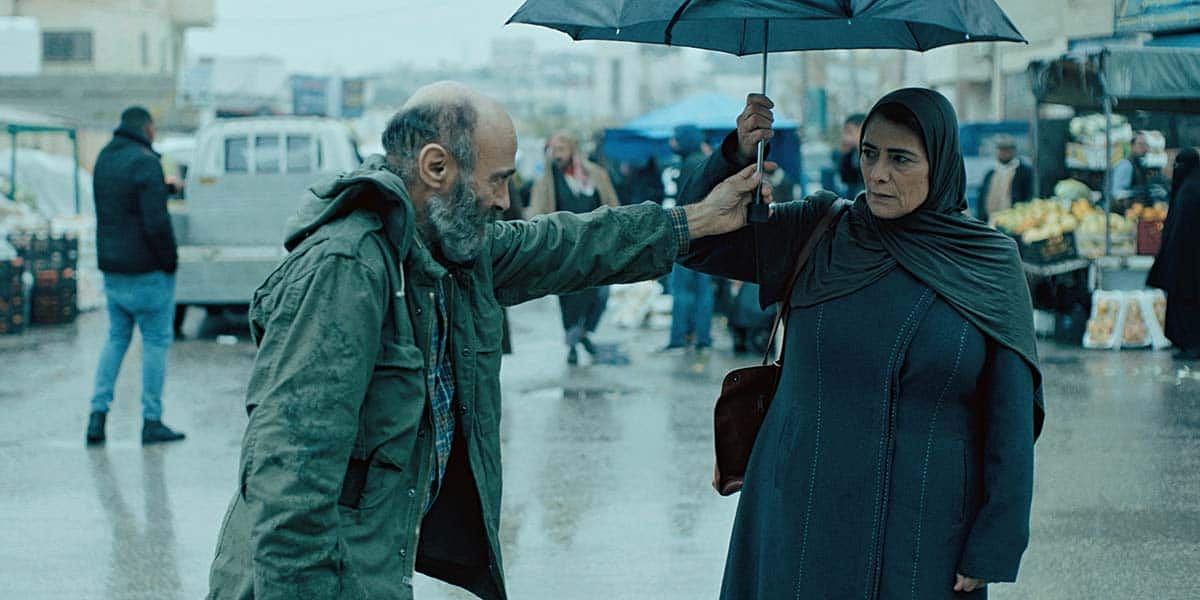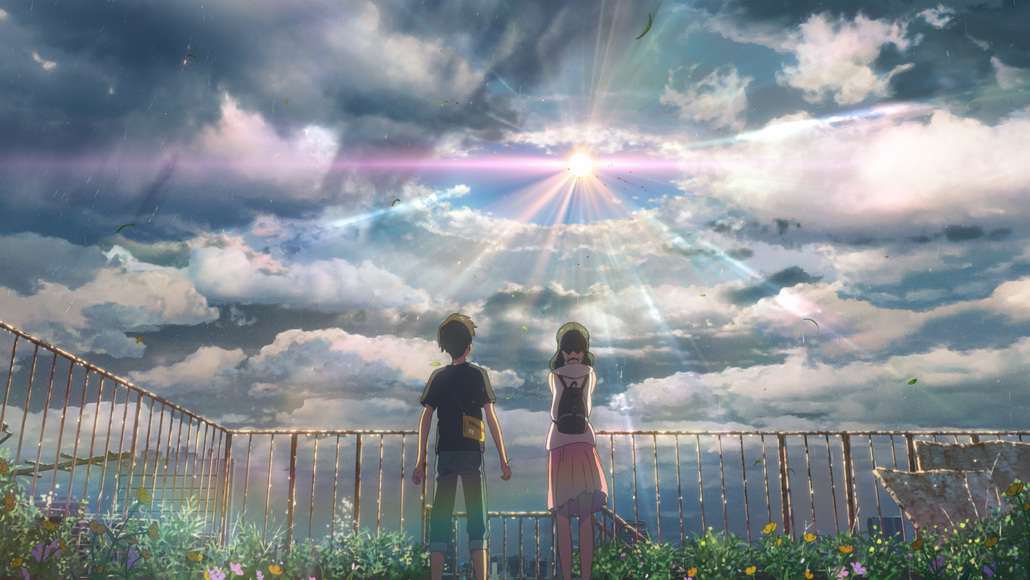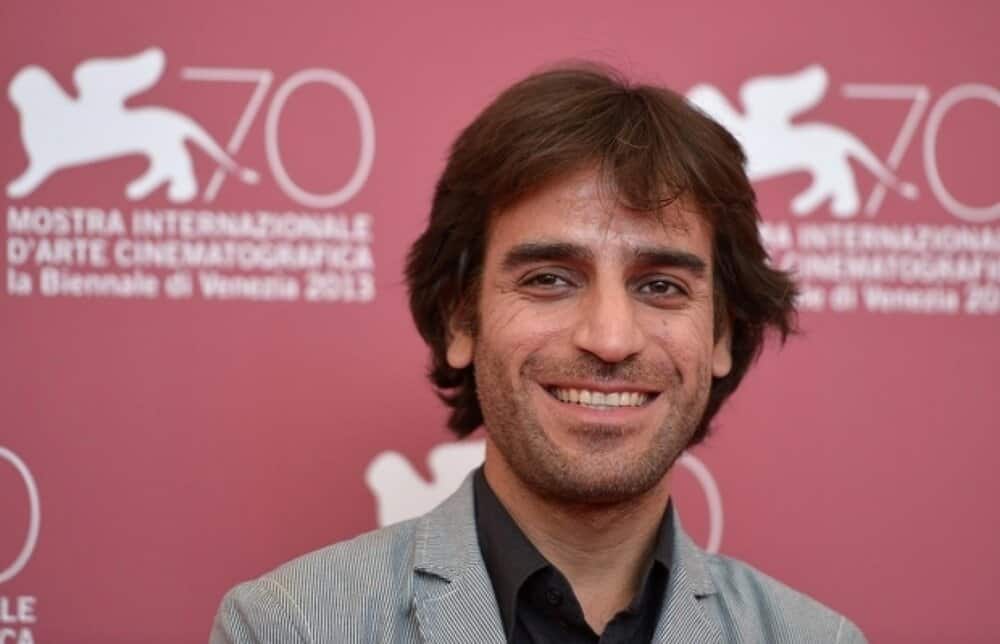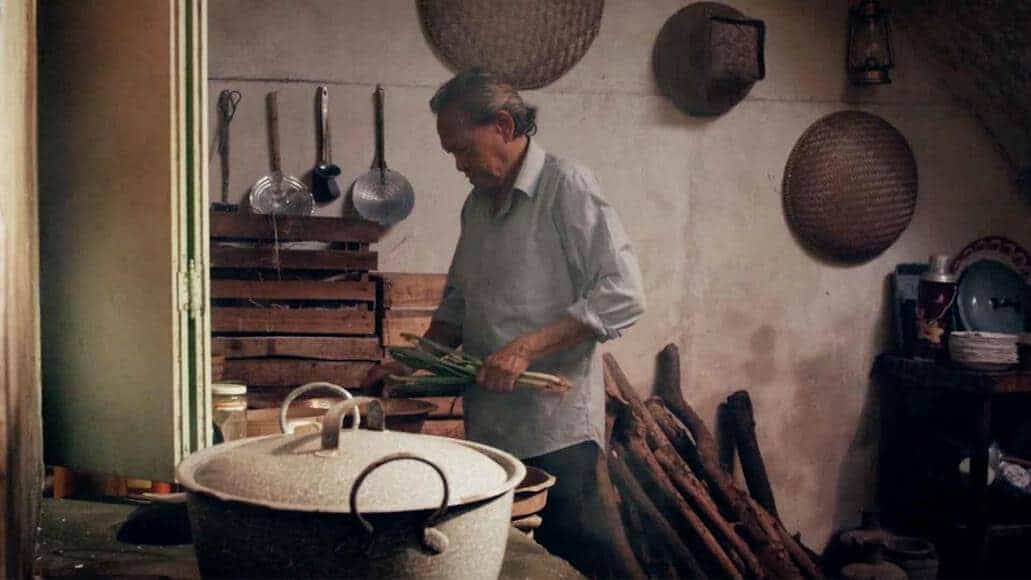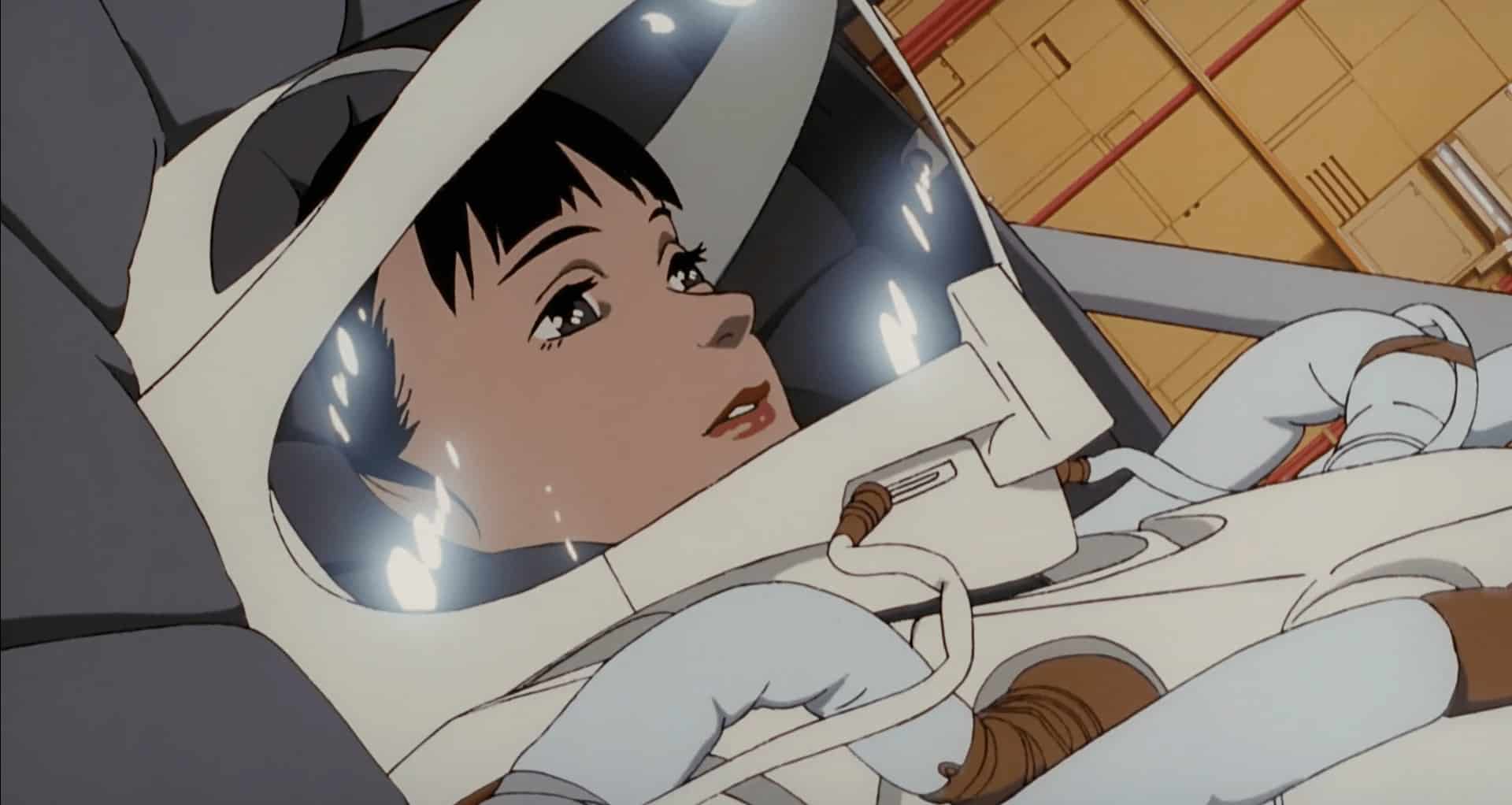A Hell Of Pipes
They hit Harue's apartment with ‘Help Me' graffiti all over the walls. Michi examines the monitors and computers. She stares out of the slim window; even daylight finds it hard to enter these apartments. She sees a giant ugly factory nearby; they decide that they'll look there. The Living that are seized by misery, have a pretension for desolate industrial monstrosities.
A mass of metal twist its way throughout this industrial wasteland. This is a brilliant set creation by art director Tomoyuki Maruo. A random empty chair pans into view, once again! Michi warns Ryosuke about the red tape and ‘The Forbidden Room'. He is familiar with the concept! In this hell of pipes and barren metal, Harue stands on a gantry, still as death, a black bag on her head. Michi finds some red tape, and discerns that an etheric incursion is nearby. Harue walks into view, the black bag on her head, and a gun in her hand. She pulls the bag off her head; her face is cold as porcelain. Ryosuke attempts to reason with her, and pleads that they can leave together.
Harue throws arbitrary industrial debris at them. She puts the gun to her head and shoots herself, repeating the scene she witnessed on the video feed. Ryosuke is desperate; he tries to ring an ambulance, to no answer! They try to save her, but she dies. They leave her corpse under a grey blanket. In the car, Ryosuke rests his head on Michi's shoulder; Michi rests her head on his, a moment of sad intimacy among the misfortune. Unfortunately for them, the car is out of gas!
Ryosuke returns to the factory to find fuel. Michi remains in the car, drained. Ryosuke discovers some barrels, a fuel can and he starts to fill it up. As the camera slowly pans around Ryosuke, a sealed door with red tape comes into view, ‘The Forbidden Room'. The door is not fully sealed, as the door opens inviting Ryosuke in! As he tries to tighten the fuel can's cap, he drops it, and with consummate cinematic logic, the cap rolls through the door into ‘The Forbidden Room'. Ryosuke is now aware of his dangerous situation! He takes slight slow steps toward the door, and then a decision is made. Ryosuke strides purposefully into the room. Not curiosity but answers are what he desires. He knows the outcome before he goes in, but he enters anyway. Ryosuke bravely advances toward a denizen from the afterlife!
Confrontation in The Forbidden Room
This amazing scene is the crux of the film and the ironic despair that writer/director Kiyoshi Kurosawa is trying to express with “Pulse”, is realised. Shadows permeate the room, and the door closes on its own volition; Ryosuke enters ‘The Forbidden Room'. He finds the petrol cap, in the shoddy clutter, haunted by a ghost. There is an otherworldly groan and the ghost enters into conversation with Rysouke and ‘explains' matters.
Ghost Forever…
Death was…
Eternal loneliness…
Help, help, help…
The shimmering shade is dressed in black with a white face. He is fuzzy and blurry, but this ghost strides towards Ryosuke with purpose. He has leaked further into material reality than some of the earlier apparitions. The shade simply walks to meet Ryosuke. Ryosuke demands what this insanity is all to do with him! He has a last ditched attempt to open the door, but it is still jammed shut!
Ghost Forever…
Death Was…
Eternal loneliness…
The shade is trying to express its predicament. Ryosuke rallies himself and demands
Ryosuke You're not real.
I refuse to acknowledge…
Never…
I refuse to acknowledge death!
He covers his eyes with his hands, like a child in a scary situation. He slowly turns around, unveiling his hands. Unfortunately, the ghost stands motionless, looking at him. Ryosuke tries the door again. A mad rush of crazed logic grips Ryosuke, he decides that if he catches the ghost, it will disappear! The shimmering shade is becoming corporeal and Ryosuke charges and grabs the ghost, much to his amazement! He looks directly into the eyes of the ghost and falls to the ground, a shaft of light falls across Ryosuke's face, as he confronts the deranged reality of his condition.
With cool rationality the ghost speaks!
Ghost I am…
Not an illusion…
The ghost shudders and shifts towards Ryosuke, to look him clearly in the eye. The spectre slowly closes in; a large close up of the greyscale shade is beyond creepy. His cold fish eyes come into focus, absolutely terrifying, dial up tones ringing! Ryosuke looks directly into the eyes of the ghost, mesmerised. It is the ghost that is in a perpetual existential despair. After an eternity of loneliness, the ghost desires eye contact, communication, humanity! This is the twist to the plot! The Dead are in desperate isolation. Overcrowded in a Hades style solitude, immortal and succumbing to a disastrous alienation! Throughout the film ‘Help Me' is repeated like a mantra. The Dead are looking for salvation in The Living. There can only be one outcome from such a terrifying proposition, The Living evaporate! Kurosawa has a stroke a genius with this simple concept, one that is truly and utterly horrifying. All those answers from eternity have finally been answered, immortality is discovered, and it is worth a whisper in the wind! The ultimate uncanny scene is resolved in a tragic moment of inspiration; this demonstrates the scale of Kiyoshi Kurosawa pessimistic intelligence.
Michi apprehends that something is wrong and runs to find Ryosuke. She finds the open door to ‘The Forbidden Room' and she grasps her head is anguish. She avoids the invitation and finds Ryosuke, sat down staring at the floor! He grabs the petrol can and they get out of the factory. He is sat staring at a black stain!
Moving Towards Nothing
They are driving through Tokyo, smoke and fires fill the urban landscape. The road is completely empty, Tokyo is failing. Michi drives with purpose as Ryoskue sits exhausted beside her. Burned out cars and trashed motorbikes litter the road. Michi is bursting with adrenaline, but wretchedly, Ryosuke is past caring, he has looked into the face of absolute loneliness. The heart of the city is desolate; a few corpses are laid out. This bustling metropolis is unnervingly quiet, a corpse itself. Ryosuke falls asleep, oblivious to the extraordinary apocalypse that is gripping Tokyo. The urban cityscape is bereft, empty and dying. The simple drive-by camera work, effectively describes the catastrophe.
Michi arrives at the docks. She stares at the sleeping Ryosuke with knowing, intense eyes. She unburdens herself, weeping on the steering wheel, unleashing her sadness. Amusingly, even in his doomed reverie, Ryosuke asks Michi what she is doing! Ryosuke entered ‘The Forbidden Room' and Michi knows very well what the outcome will be. Ryosuke, with his easy going ways, shrugs it off, as if it is nothing. Michi is incredulous, as he can hardly move and despair drapes his being: she continues to weep. Ryosuke's natural kindness can't hide the fact he is doomed! Michi will do anything to help him and she suggests going back to Harue's remains, if that will ease his pain. Her compassion shines. Kiyoshi Kurosawa protagonists are decent, helpful and kind, unusual characters in a horror film! No loud mouth over-sexualized teens, no bad boys about to become unstuck, no crazed villains with a sinister plot; just a couple of young people trying to make sense of their lives and then a cataclysm erupts. Ryosuke will always to try to move forward, in his lazy way, while he is able. They need to keep going, somewhere, anywhere, but they have to move!
Michi helps Ryosuke to a boat, his despairing ennui sapping his strength, but he keeps pushing, one foot in front of the other. Michi has to go to find the key for the boat, as a massive fiery plane crashes in the distance, with a huge explosion. This is Kiyoshi Kurosawa's only ‘big' special effect used in the whole film. This is apocalyptic film, but this special effect only lasts seconds. The budget may have been tight, but perhaps Kiyoshi Kurosawa is being satirical in his relation to genre expectations, but this brief scene drives home that the world is unravelling. The centre cannot hold. All is falling apart.
At the harbour office, ash floats around the room, evidence of spontaneous existential despair explosions! Michi discovers the key and dashes back to the boat. They cast off and Ryosuke rouses himself to drive the boat, powering off, into the deep!
Michi stands on the ship from the opening scene, gazing out to sea. The ship's captain tells Michi that they will head for Latin America, as signals are coming from there. The captain will take them as far as they can. The captain is sure that is correct to keep on living, it is the right thing, no matter what. He is an older man with Ryosuke's type of mentality. In their cabin, Ryosuke is crashed out against the wall, completely weary, a shadow falls over him. Michi watches intently as he evaporates, leaving a black stain on the wall. Michi's mind is shattered, she sadly sings
Michi Now, I'm alone with my last friend in the world.
And I've found happiness
A speck of ship cruises across a large lonely sea, nothing to be seen, and nothing to be known!
Developing information technology
“Pulse” is a prescient film and an ironic comment on the hypocrisy of modern technology and the utopian foolishness surrounding any scientific or technological progress. All these glorious new gadgets, cures and conveniences are wonderful, but the human problems remain the same and no answers are ever forthcoming. The explosion of the internet and mass communication in the mid-1990s were seen to be the solution to many issues around information, expression, connection and freedom. Kiyoshi Kurosawa, a supreme sceptic, completely dissolves this utopianism, with the ironic evaporation of the population! New technologies accentuate alienation, connection is interrupted and freedom is self-obsessed into superficiality.
Information is power, but power behaves as it always has, for power's sake! The internet has opened up a new era of information and knowledge, and the ability to converse with like-minded folks, anywhere on the globe, a remarkable achievement. Like any human endeavour, it has also unleashed a horde of complete stupidity, irrationality, new modes of criminality, and most distastefully, an explosion of hatred. Unfortunately, Kiyoshi Kurosawa's scepticism and pessimism, in 2001, is well founded.
Existential Apocalypse
It would be interesting to discover if Kiyoshi Kurosawa is familiar with the writing of the Austrian-born-Israeli thinker and existentialist philosopher Martin Buber, and his fascinating book “I And Thou”. “Pulse” explores existential themes in a world filled with loneliness and alienation. “Pulse” also describes a scenario in which Martin Buber's ideas unravel. Martin Buber is one of the most interesting thinkers of the 20th century. Even though he had plenty to be pessimistic about, his ideas are on the positive spectrum into enquiries around human beings and meaning. I will make my apologies to any Martin Buber scholars with my general approach, but his ideas have an interesting chime with “Pulse” and its narrative.
Martin Buber considered the world of experience and sensation to be an ‘I-It' relationship; this is our everyday state of being. Martin Buber considered this relationship a monologue. ‘I-it' is our everyday interaction with inanimate objects, animals, people and the world. We have a monologue with ourselves in our consideration of objects and how they relate to our self-interest. As this a pure analytical and material view of existence, this monologue state can give rise to ideas of alienation, isolation etc. Martin Buber's theological interests can be ascertained from this sceptical view of a purely material existence. He considered that this limited view would inevitably lead an existential crisis.
This is the state of conscious being that all the characters in “Pulse” inhabit. The world of “Pulse” is a drab concrete purgatory. Images of production and progress, such as industrial factories, are suitable places for suicide! The new emerging technologies will put Martin Buber's theological interests to the test.
The exit out of this monologue fugue is the ‘I-Thou' experience. This is Martin Buber's beautiful idea, in which human beings strive to put one foot in front of the other, the big ‘Yes' to life. Martin Buber's considered ‘I-Thou' an encounter or dialogue of two beings, with no qualifications, no objectification, just pure authenticity. It is not ideas or information that are at stake here, but the encounter itself, it is from the dialogue that authenticity arises. Ryosuke fumbles and struggles, but he tries to be authentic in his relationship to Harue. Unfortunately he can't have a dialogue of being, when Harue is locked in her monologue state. Michi is blown around by the winds of fate, but she strives for authenticity, until tragedy strikes.
Martin Buber's natural inclination is to expand his ‘I-Thou' relationship into the theological realm. This is where Buber's ideas unravel in the world of “Pulse”, and the philosophical horror of nihilism is all triumphant. When The Dead start to leak into material reality, The Living don't receive the answers they are looking for. It is The Immortal Ghosts who are the ones in search of answers from The Living! They are locked in a permanent ‘I-It' existence of perpetual and immortal isolation. Authenticity is a pipe dream and existence a never ending nightmare. When the truth of immortality is realised by The Living, even though there is no actual malice from the ghosts, The Living dissipate into despair. The future of being, a whimpering black stain! This is a horror film, and Kiyoshi Kurosawa takes the dread to apocalyptic lengths. Martin Buber's existential ideas chime with “Pulse”, but with a tragic outcome. Buber's ‘I-It' monologue relationship is perfectly realised by Kiyoshi Kurosawa, crafting an intelligent horror film.
An Uncanny Performance
Kiyoshi Kurosawa is an extremely intelligent writer/director. He brings forth his pessimistic vision with the help of a crowd of talented collaborators. Junichiro Hayashi photographs the urban landscapes, drab corridors and chaotic factories with soul sapping brilliance. The grey hues imbue the desolation with a tragic quality. The crazed fuzzy ghostly incursions are blasted through with jaundiced yellow and shadows. The lighting is particularly well used; the noir fashion increasing the strangeness to spine tingling levels. Tomoyuki Maruo's art direction moves from the minimalist, in the alienating corridors and the mazes of metal railings and stairs, to the bright lights of the arcade and the train, into the absolute chaos in the factories. The order at the University slowly slides into entropy. He gives the isolated apartments little moments of life, with Harue's books, and Ryosuke's untidy tiny room and his magazines; but monitor screens are everywhere, forever watching. The special effects are generally quite simple, fuzzy, and jerky, either on ambiguous monitor screens or with the ghostly encounters themselves, in a greyscale style. This paradoxical and concise use of fuzziness is a masterstroke. Trying to define something as undefinable as the uncanny is going to be difficult, but Kiyoshi Kurosawa and his team achieve something remarkable, creating a truly creepy experience! The special effects are a triumph; sometimes simplicity is the most effective technique. The music veers between almost clichéd wailing sopranos to buzzing soundscapes and disconcerting noises, but it is all effectively used. The use of the wailing sopranos is given a new lease of life in “Pulse”, as this style works really well and is genuinely scary, especially when it's used in a different context of urban situations, a University library or a car drive.
The acting across the whole cast has a naturalistic, with a gentle quality, even when events turn disastrous. Kumiko Aso plays the ingénue with a light touch. Kind, caring, with embittered feelings towards her absentee father, she is the survivor who accepts and expresses her emotions, from which she gains strength of character. Pummelled with misfortune, Kumiko Aso gifts Michi Kudo with great heart and emotional strength, until her own final tragedy. Haruhiko Kato is impressive, transforming Ryosuke from an untidy, bored awkward student, into a passionate lover of life. He fight's with every ounce of his being, even when the despair infection starts to crush his heart. He knows what is coming, it is unavoidable, but he strives to survive, until there is nothing left of him. Kato uses subtle comedic acting in the earlier scenes then transmutes Ryosuke into a strident young man dealing with crisis and then his ironic final heroic battle with hopelessness. His performance flows from witty ennui, to action, to disaster through a subtle arc of character development. The beautiful Koyuki sizzles as Harue. The seemingly confident, busy post-graduate is an affectation. Her inner self is akin to a character out an Edgar Allen Poe novel. She is a death obsessed intellectual, locked in her own self-imposed exile. Madness stalks Harue and Koyuki gives a nervy and at times, intense performance.
The Surrounding Emptiness
“Pulse” is a film where the nihilistic philosophical horror of Poe, Lovecraft, and the modern master, Thomas Ligotti, interact with modern technology and apocalypse arises. Right from the off, suicide and crisis impacts on the life of a young working class woman, and weirdness imposes itself on an untidy student's life. The sheer mundanity of their urban dislocation is a character in itself. Drab, dull and dreary urban interiors and exteriors permeate “Pulse” imposing its will throughout the film, pumping up the alienation and desperation. Kiyoshi Kurosawa is an intelligent sceptic who creates a melancholy cinematic experience, but punctuated with moments humour. “Pulse” is a horror spectacle imbued with a great sadness, and it is uncannily creepy!




